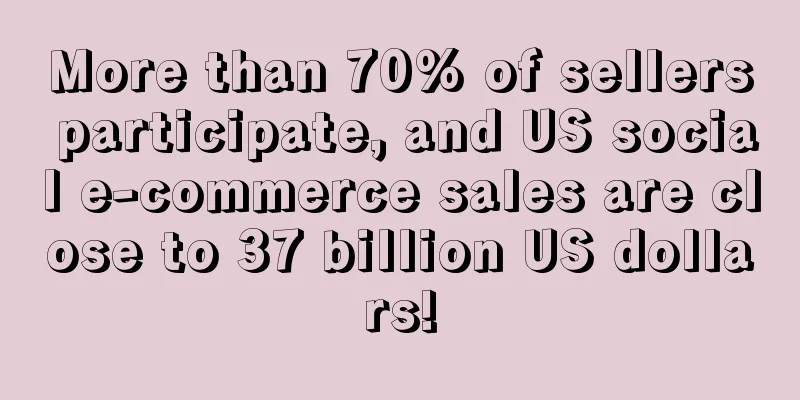More than 70% of sellers participate, and US social e-commerce sales are close to 37 billion US dollars!

|
Social e-commerce is developing. The current mainstream social platforms mainly include Meta's Instagram and Facebook, TikTok, Pinterest, etc.
After reviewing the e-commerce operations of some mainstream social platforms, eMarketer found that in terms of innovation, Instagram, Facebook and TikTok, the favorite of Generation Z, are currently in the leading position; but platforms such as Pinterest and Twitter are also doing their best to expand their e-commerce functions.
Instagram, Facebook and Pinterest have separate "Shop" tabs where sellers can create online storefronts; TikTok does not have a dedicated store page, but brands can add a "Shopping" tab.
eMarketer also found that Instagram and Facebook lead in features like in-app checkout, but TikTok and Pinterest are leveraging their strengths in product discovery to create value for retailers.
While many platforms offer some form of shoppable content, only Facebook and Instagram currently have in-app checkout options.
The lack of an in-app checkout isn’t necessarily a deal breaker for consumers, as 56% of U.S. consumers will make a purchase through social media by linking to a retailer’s website, according to Bizrate Insights. But eMarketer believes that purchase conversion rates should be higher if an in-app checkout option is available.
In addition, live shopping is increasingly being used as an entry point for social commerce. Twitter has begun testing live shopping features. And Pinterest recently launched Pinterest TV.
It is important to note that although 48% of American social media users said they had made purchases through social media in the past year, according to another survey, social commerce has not yet fully become mainstream. eMarketer expects social e-commerce sales in the United States to reach $36.62 billion this year , only one-tenth of China's.
Still, marketers are enthusiastic about the promise of social commerce: A study by The Harris Poll and Sprout Social found that 73% of businesses currently sell through social media, a number they expect to rise to 79% in the next three years.
eMarketer said that although social commerce has not yet become mainstream, it is still a very valuable tool for brand communication. Social e-commerce USA |
>>: 2022 Home Decoration Trend Forecast: Blue-green will be the dominant color
Recommend
What is AGORA? AGORA Review, Features
Agora was co-founded by Riccardo Basile and Eliza...
Automatic replenishment and one-click management, Amazon will launch new services!
On September 1st local time, Amazon officially is...
What is Shanghai Jie Li Freight? Shanghai Jie Li Freight Review, Features
SJL Express provides end-to-end cross-border logis...
With annual revenue exceeding 2 billion, another Shenzhen big seller is quietly making a fortune!
As a major cross-border auto parts brand, Daotong...
What is Overseas Consultant Help? Overseas Consultant Help Review, Features
Overseas Consultant Helper is a one-stop service c...
Amazon's brand acquisitions continue, and two more companies have received financing!
Heros from the UK recently received $200 million ...
What is GoodSeller? GoodSeller Review, Features
GoodSeller is an ERP SaaS system that provides one...
Annual sales exceed 100 million! Niche sellers overtake others in the red ocean market
As the industry landscape continues to change, mo...
The value of the "new top streamer" skyrocketed, and the copyright infringement warning of Pikachu Duck
Pokemon is a popular IP that is loved by children...
What is Diapers? Diapers Review, Features
<span data-docs-delta="[[20," ","...
What is China Post Overseas Shipping? China Post Overseas Shipping Review, Features
China Post Overseas Logistics is China's larg...
What is Facebook? Facebook Review, Features
Facebook (FB) is a social networking service and ...
Anker cuts into new track
From OEM to innovation, Anker has been struggling...
Amazon is carrying out humanitarian efforts in Ukraine
" There is no doubt that there are deep conc...
With revenue increasing by US$186 billion, RCEP will bring significant opportunities to its 15 member countries!
The Peterson Institute for International Economic...









